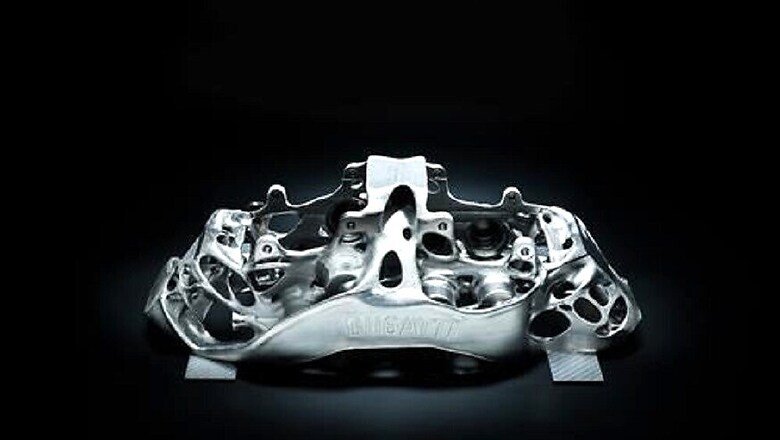
views
A couple of years ago 3D printing may have looked like a bit of a gimmick, but we're now starting to see it embraced by all sorts of industries and it could be the future of precision manufacturing. As far as the auto industry is concerned, Mini has already started offering user-customizable trim and interior pieces made using 3D printing, and the Koenigsegg Agera One:1 now employs 3D-printed turbochargers. Now Bugatti is getting in on the act by announcing that it's currently testing brake calipers for the new Chiron that are made through 3D printing.
As if the Chiron wasn't a special enough car already, these new eight-piston monobloc brake calipers are the world's first brake calipers to be produced by a 3D printer, and they're also the largest brake calipers of any type in the entire automotive industry. Of course, with 1,479 bhp (1,500 PS) and 1,180 lb.-ft. (1,600 Nm) of torque on tap, the Chiron really does need the biggest brake calipers available.

The shape and design of the calipers is all about minimizing unnecessary material to keep weight down, which is also why they're made from such a lightweight material. While most calipers today are made from aluminum, including those currently on the Chiron, these new ones Bugatti has developed are made from titanium. Ordinary calipers are limited in shape due to the casting process as aluminum needs to fill a mold, which means there's always going to be some excess material. 3D printing builds the caliper layer by layer, so the very minimum amount of material can be used to create them, thus avoiding unnecessary material and weight.
Bugatti's Head of New Technologies in the Technical Development Department, Frank Götzke, explains "Vehicle development is a never-ending process. This is particularly true at Bugatti. In our continuing development efforts, we are always considering how new materials and processes can be used to make our current model even better and how future vehicles of our brand could be designed."
There is a drawback though, which is the amount of time it takes to create each new caliper using 3D printing. Although the 45 hours it takes to produce each one isn't an issue for a vehicle as exclusive and expensive as the Bugatti Chiron, it could be some time before the brake calipers on a Ford Fiesta are made using this process.
Also Watch: 2018 Maruti Suzuki Swift Review (First Drive) | Cars18


















Comments
0 comment